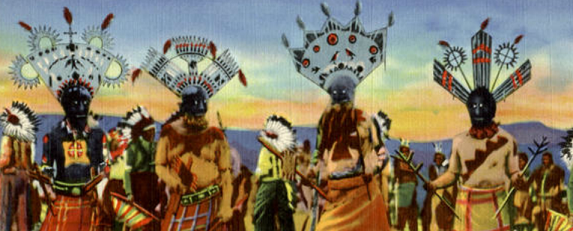
While the movies and popular books (including some textbooks) speak of the Apaches as if they were a single American Indian nation, there are many different, distinct, and autonomous Apache groups. There are six major divisions of the Apache: the Western Apache, Chiricahua, Mescalero, Jicarilla, Lipan, and Kiowa-Apache. East of these is also divided into discrete groups.
The Western Apache include five groups: Cibecue, San Carlos, White Mountain, Northern Tonto, and Southern Tonto. While there was intermarriage between these groups, they considered themselves to be distinct from one another and had clearly defined territorial boundaries. The traditional territory of the Western Apache is in Arizona and ranges from as far north as Sedona to as far south as the San Pedro River Valley.
The Chiricahua Apache are south of the Western Apache in the mountains of southeastern Arizona. The term “Chiricahua” was coined by an anthropologist to refer to the autonomous tribes living in or near the Chiricahua Mountains. The word “Chiricahua” is actually of Ópata origin.
The Jicarilla Apache are divided into two bands: the Llaneros (the plains people) and the Olleros (the mountain-valley people). The Jicarilla borrowed culturally from the Plains tribes (especially the war and raiding complexes) and from the Pueblos (agricultural and ceremonial rituals).
The Eastern Apache include five groups: Gila, Mimbres, Coppermine, Warm Springs, and Mescalero.
Ceremonies are a part of the social and cultural glue that brings people together, allows them to pass on their heritage, and reinforces their sense of purpose. There are many different kinds of ceremonies including rites of passage—ceremonies which designate a change in social status such as the transition from child to adult—and healing ceremonies. A few Apache ceremonies are described below. There are no photographs, as photographs of spiritual events are often considered offensive to Native peoples.
Girls’ Puberty Ceremony:
Among the Western Apache the Girls’ Puberty Ceremony invests in young girls the qualities which are felt to be important for adulthood. The ceremony is known as Na’íí’ees which means “preparing her” or “getting her ready.” This is an elaborate ceremony which has consequences for the entire community. In the ceremony, the power of Changing Woman enters the girl’s body and lives there for the four days of the ceremony. The gift of Changing Woman is longevity and physical health. During the ceremony the people come together to reaffirm kinship ties and to benefit from the healing powers of the ceremony.
Among the Jicarilla Apache the ceremony is performed in a large tipi that faces east. During the four-day ceremony, the girl and her partner (an adolescent male of the same age) listen to sacred songs about tribal origins. The ceremony stresses the positive traits that people should imitate in their own lives.
Among the Chircahua Apache the Girls’ Puberty Ceremony is composed of a series of rituals which reinforce the basic values of Apache culture. During the ceremony, the girl is united spiritually and personally with the most revered of the Chiricahua’s ancestors, White Painted Woman. Chiricahua elder Elbys Naiche Huger notes: “Here we say White Painted Woman, other Apaches might say Changing Woman or call this a Sunrise Ceremony.”
Cradle Ceremony:
Among the Chiricahua Apache, the Cradle Ceremony is conducted four days after birth. The ceremony involves marking the child with pollen, presenting the cradleboard to the four directions, and then placing the child in the cradleboard. The ceremony is intended to ward off evil influences.
First Moccasin Ceremony:
The Apache hold this ceremony to celebrate a child’s first steps. The ceremony is held at the new moon with the children wearing newly made outfits and their first moccasins. The purpose of the ceremony is to keep the children healthy and strong. The ceremony includes a feast and a gift give-away as well as songs, prayers, dances, and blessings with pollen.
Holiness Rite:
The Holiness Rite is an Apache long-life ceremony which is based on the story of Bear and Snake stealing two girls during the emergence of the People from the underworld. The girls were rescued and returned by the White and Black Gods. As a curing ceremony which relieves Bear and Snake sickness—that is illness which originate from Bear and Snake. The complex, four-day ceremony may treat up to 12 patients. During the ceremony, the patients are subject to treatments which are intended to frighten away the bear and the snake.
Among the Jicarilla, the Holiness Rite is also known as the Bear Dance and is usually performed for three days before and during the appearance of the full moon (for a total of four days). The ceremony cures bear, snake, and other sicknesses. The ceremony takes place in a large enclosure (about 80 feet in diameter) which has an opening to the east. Within the enclosure on the west side is a tipi which faces east. The patients are confined to the tipi during the ceremony.
Hoop Dance:
The Hoop Dance is a White Mountain Apache healing ceremony. During the ceremony, the sick person is seated on a blanket facing east. The dancers – one boy and one girl at each of the four cardinal directions – dance in toward the patient. The boys place their hoops over the patient’s head and the girls place the crosses which they carry over the patient’s head. This is repeated four times. Next, there are ceremonies involving the four directions in which the hoops are placed over the patient.
Lightning Ceremony:
The Lightning Ceremony is a White Mountain Apache ceremony which is done to protect the people from the danger of lightning. In addition, the ceremony brings the rain and insures good crops.
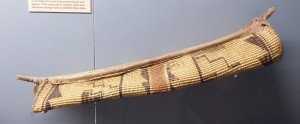
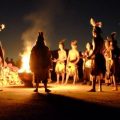
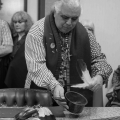
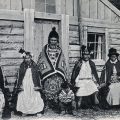
Leave a Reply